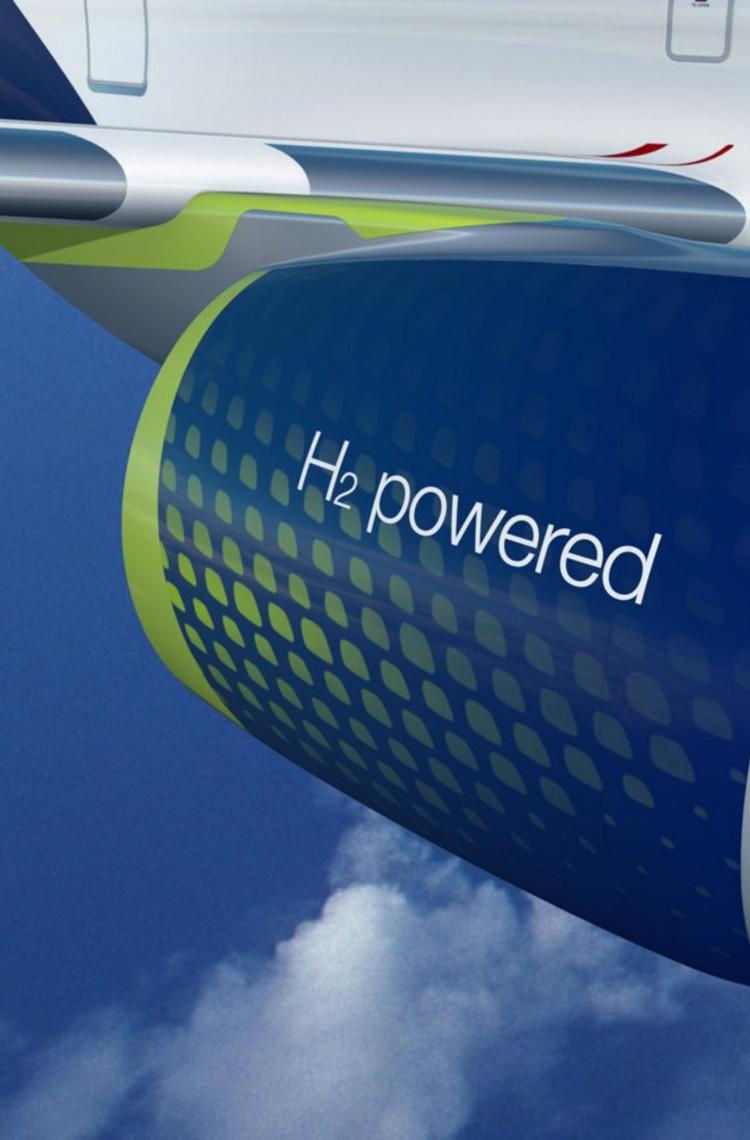Research into hydrogen as a potential energy carrier to power future zero-emission aircraft has been intensifying in recent years. But the road to hydrogen-powered aircraft requires significant effort inside the aviation industry and beyond. From hydrogen storage, cost and infrastructure to public perceptions about safety, the aviation sector is working to mature the technology while tackling some major challenges.

Hydrogen is increasingly considered as one of the most promising zero-emission technologies for future aircraft. However, despite the fact that hydrogen has an energy-density-per-unit mass that is three times higher than traditional jet fuel, a variety of challenges must be addressed before widespread adoption can happen.
From the technical side, aeronautical engineers will need to take the technologies developed in the automotive and space industries and make the technology compatible with commercial aircraft operations, notably by bringing the weight and cost down. One specific challenge is how to store hydrogen on board the aircraft. Today, liquid hydrogen storage is among the most promising options, while storing hydrogen as compressed gas poses challenges with current aircraft weight and volume requirements.
In addition, the aviation industry will need to achieve the same or better safety targets than what has been achieved with existing commercial aircraft. Indeed, extensive safety precautions are currently taken into account in the design and operation of today’s kerosene-powered aircraft. This stringent approach has ensured the industry’s consistent safety record throughout the years. Future hydrogen-propulsion systems will thus need to achieve equivalent or better safety levels before hydrogen-powered aircraft can take to the skies.
Cost-competitive green hydrogen and cross-industry partnerships will be mandatory to bring zero emission flying to reality.
- Glenn Llewellyn, Airbus VP, Zero-Emission Aircraft
On the road towards green hydrogen
Another key challenge for widespread adoption is liquid hydrogen availability and cost at airports. Hydrogen is available in vast quantities in oceans, lakes and the atmosphere, however, it must be separated from oxygen in water in order to be used for industrial purposes.

Today, more than 70 million tonnes of hydrogen are produced every year, the primary extraction source of which is natural gas (i.e. grey hydrogen). When extracted via fossil fuels, hydrogen production is energy-intensive, responsible for around 830 million tonnes of CO2 emissions per year. However, electrolysers, powered by electricity generated from renewables, offer a low-emission alternative. This process, resulting in “green hydrogen,” involves water electrolysis to extract hydrogen.
Less than 0.1% of global dedicated hydrogen production today is considered green hydrogen but that could change. Between 2014 and 2019, global wind electricity production doubled while global solar electricity production quadrupled. The International Energy Agency (IEA) predicts the rapid market growth of renewables, particularly solar and wind, over the next decade will exponentially increase the availability of renewable electricity, thereby driving down its cost. And demand for electrolysers capable of producing green hydrogen is already growing rapidly with an expected electrolyser capacity of 40 GW in the EU by 2030. The increased availability of green hydrogen will thus help to decrease its cost by as much as 30% by 2030 and 50% by 2050.

This 2030 timeline is in line with Airbus’ anticipated delivery of its ZEROe programme. Indeed, according to Glenn Llewellyn, VP of Zero-Emission Aircraft, Airbus is targeting the use of green hydrogen to fuel its future zero-emission aircraft. He believes declining costs for renewable energy and the scaling up of hydrogen production could make green hydrogen increasingly cost-competitive with existing options, such as jet fuel and sustainable aviation fuels.
“Cost-competitive green hydrogen and cross-industry partnerships will be mandatory to bring zero-emission flying to reality,” he says.
Ensuring hydrogen availability at airports worldwide
But for hydrogen to really achieve widespread adoption across the aviation industry, it must be made available at airports worldwide.
And advancement in this area is in its infancy. One main challenge is developing the large-scale transport and infrastructure solutions required to supply airports with the necessary quantities of hydrogen needed to fuel aircraft.
A recent IEA study suggests that repurposing existing infrastructure, including the millions of kilometers of pipelines used today to transport natural gas, could be a cost-effective solution. Larger quantities of hydrogen could thus be transported via pipeline from production sites, while smaller quantities could be transported by truck. In addition, some airport locations could develop the necessary infrastructure to support on-site hydrogen production, particularly if a renewable energy supply is within close proximity.
Airbus is currently collaborating with both airports and airlines to ensure the necessary hydrogen infrastructure is in place. This includes research into how all airport-associated ground transport (i.e. cargo trucks, passenger buses, aircraft tugs, etc.) could be decarbonised throughout the 2020s timeframe using a stepped approach, which is expected to pave the way to hydrogen availability for aircraft over the 2030s timeframe.

Changing public perceptions about hydrogen
For over 40 years, hydrogen has been safely used in vast quantities as an industrial chemical and as fuel for space exploration. In fact, several million cubic meters of hydrogen are transported and handled every year. However, public perception on hydrogen’s safety is still mixed: only 49.5% of respondents to a recent survey believed that hydrogen is “generally safe.” Throughout the years, this perception has undoubtedly been negatively shaped by incidents like the 1937 Hindenburg disaster.
However, what is interesting about the survey is that 73.2% of participants responded favourably to the second question about “willingness to use hydrogen-powered modes of transportation.” As hydrogen increasingly becomes a mainstay in the development of new transport solutions like cars and buses, public perceptions on hydrogen are likely to change–which should positively influence hydrogen adoption in aircraft.
The road to widespread hydrogen adoption in aviation is still long. But international coordination across industries is expected to support the development of the hydrogen economy–an important endeavour to help meet ambitious global decarbonisation targets over the next two decades.

